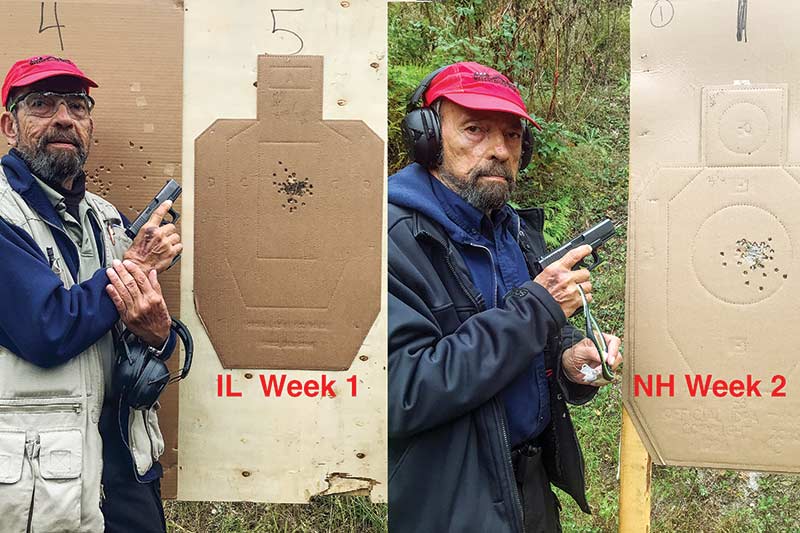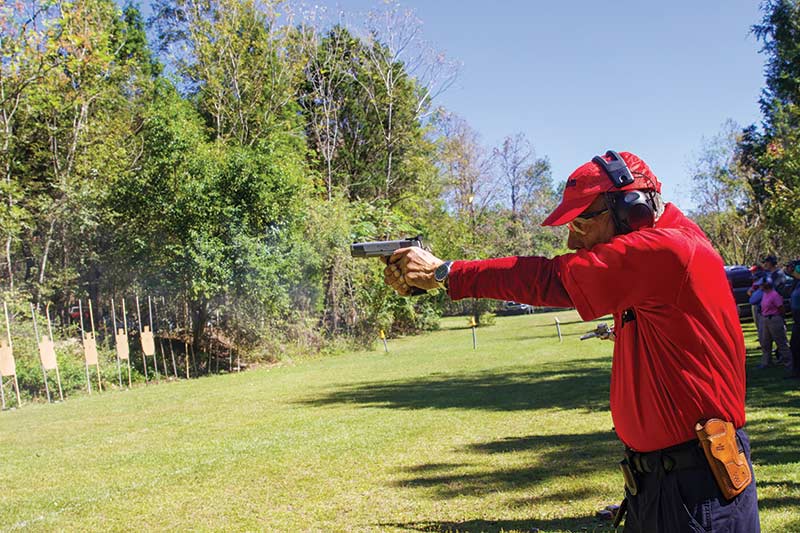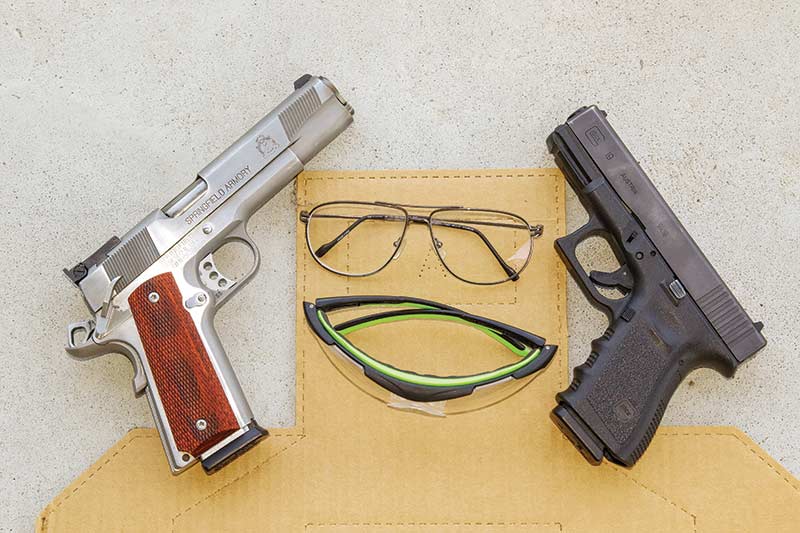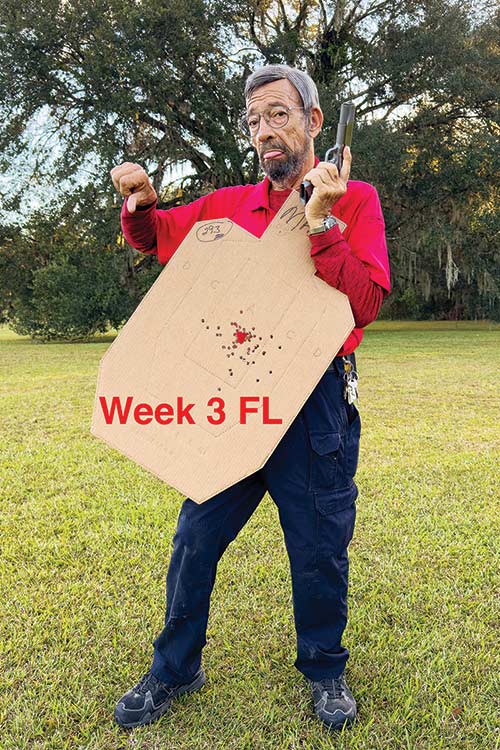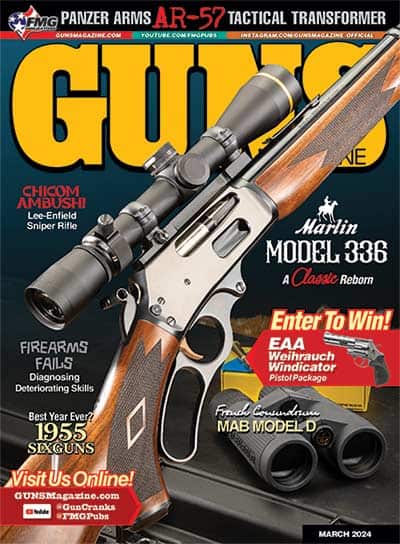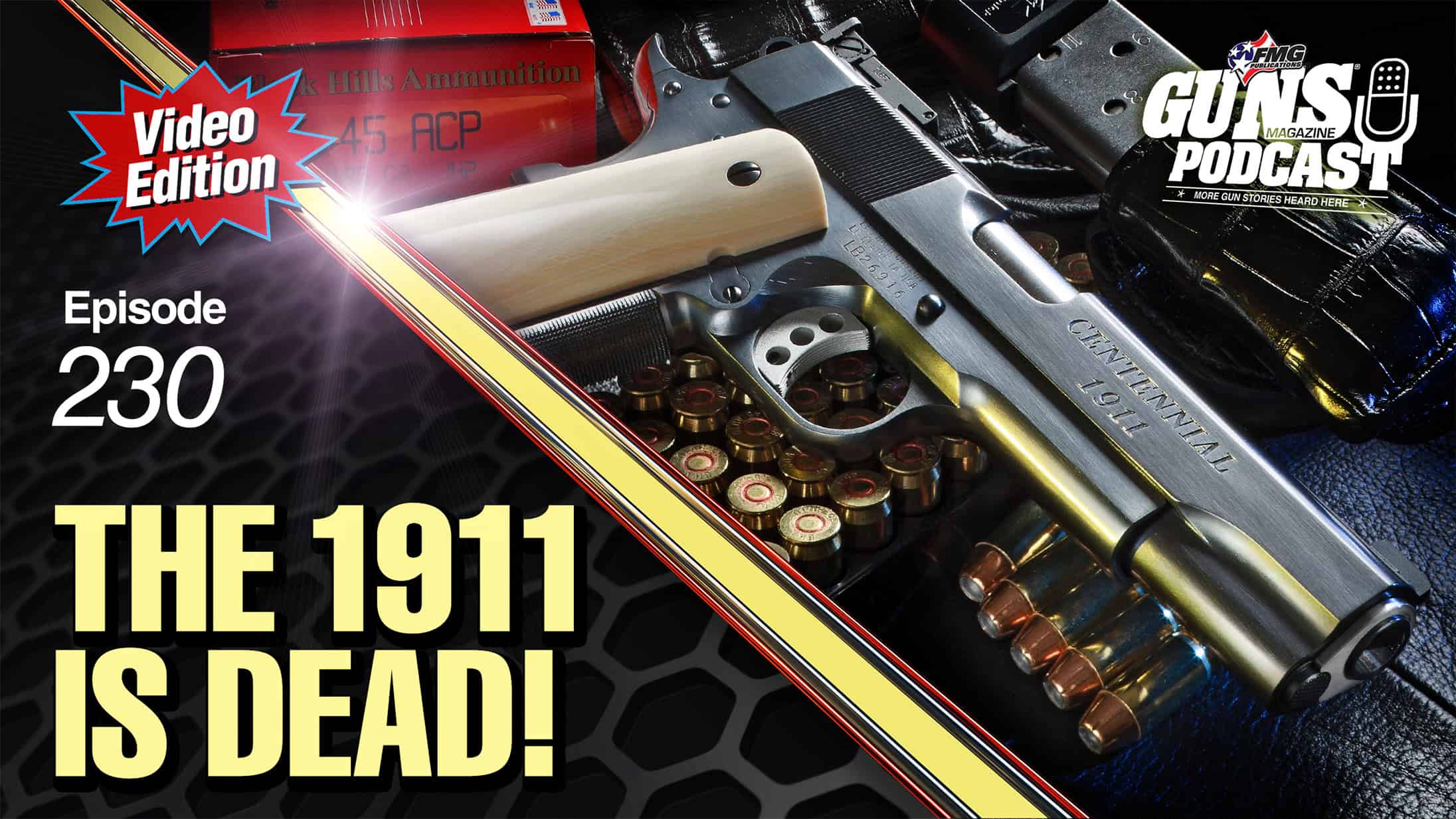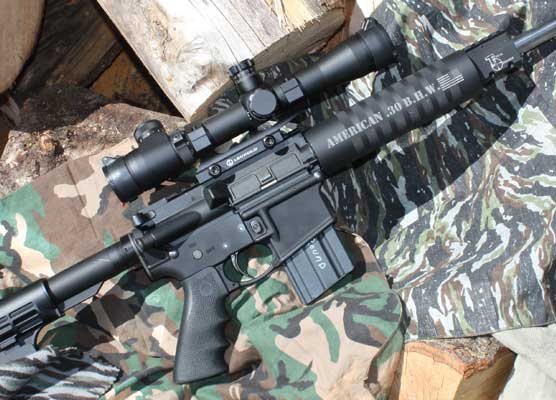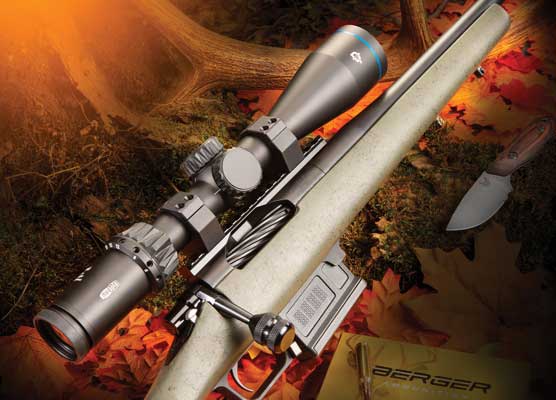Diagnosing Deteriorating Handgun Marksmanship
When Things Go Bad, Find Out Why!
When the quality of your shooting drops off, a process of elimination may show what needs correction.
When you are early in your shooting career or in your prime of life therein, you work on climbing the hill and getting better and better. But the hill is shaped like a bell curve, and when you reach this writer’s point of old age and decrepitude, you’re on the downside and applying the brakes instead of the accelerator in hopes of slowing the descent.
Good Times
Whenever you perceive your skill and performance level dropping, it’s critical to analyze, diagnose and correct as best you can. Let me give you an example rather fresh in my mind.
October of 2023 saw me teaching three 40-hour MAG-40 classes (MassadAyoobgroup.com). These are about 65% classroom on deadly force principles and armed defense tactics and 35% live-fire shooting. The class carries a 500-round ammo allotment and concludes with a 60-shot police-type qualification course.
While I have some custom guns I carry on my own time, these days I try to teach with a pistol not costing more than the tuition for the course. If the instructor does a good demo with a $3,000 gun, some students will think it’s about the gun, not the techniques being taught. My October teaching gun was a GLOCK 19 Gen 3 I had won in a GSSF match a decade or so earlier, bone-stock right down to the plastic sights and 5.5-lb. trigger. The only exception was the Striker Control Device developed by Tom Brown and the late Todd Louis Green and now available from Ernest Langdon at Langdon Technologies.
At the end of the 40-hour MAG-40 class, the staff and I shoot the final qualification for the students to set the pace and show what’s expected of them. For incentive, I promise if they tie my score they get an autographed dollar bill and if they beat me, an autographed five. At the first October class, hosted by Midwest Training Group at the Illinois State Rifle Association range, the little G19 gave me a 300 out of 300 score with a nice group a little over 4″ for the 60 shots — no five dollar bills outgoing that day!
Downslide
Sciatica hit me on the left side a week later at the next course in New Hampshire. I was hobbling around but still able to function. The pace-setter score with the same pistol was still 300, but with a slightly larger group in the 5″ range. Both scores had been shot with plain shooting glasses instead of my usual corrective lenses, to make the point those of us with corrected vision may one day have to shoot with “the naked eye” and are wise if we have documentation we can do so. We shouldn’t be that law school exemplar of recklessness, the “blind man with a gun.”
But, by the third week in Florida, sciatica was really taking hold. Pain ranged from lower back to left foot, with the left leg profoundly weakened and with some tremble. It caused a fall at one point, fortunately without a gun in my hand. It had been a while since I had shot the pace-setter mirror-image (left-handed, though I’m right-handed), which I also recommend to students and fellow instructors, so I shot the course southpaw. Because arthritis has twisted my left index finger downward and it pinched painfully between the toe of the GLOCK’s trigger and the guard, I switched to a Springfield 1911A1 with a sliding trigger.
OMG! By now the sciatica was causing leg tremors and balance issues. I wound up with a 293 out of 300 and was grateful to have it. And, yes, that cost me several five dollar bills — but it cost me more in ego. After all, 299 sounds like a respectable 99.67%, but the mirror image group had measured just over 7.5″: a profound degradation in accuracy. It was time to diagnose.
Process Of Elimination
Could vision issues have been a problem? No. I shot all three of the same courses of fire with the same plain shooting glasses, the southpaw one cross-dominant with my master eye (the right) guiding the left hand. Different gun? No. I had been shooting GLOCKs since the mid-’80s but 1911s since 1960. The 1911 had a sweet 4.5-lb. trigger and I think I generally shoot 1911s a tad better than striker guns. Stress? In and of itself, probably not. I do this all the time in front of students who are wondering, “Let’s see if our instructor can shoot,” and it provides my regular Weekly Adrenaline Requirement.
What was needed was a control comparison. Four days after the 293 score, I’d had time to get horizontal and the sciatica was easing up so I shot the course mirror-image again with the same Springfield 1911 and the same 115-grain 9mm FMJ I had been shooting all month. I only felt bad tremor during six shots from the deep cover crouch. The result was a 299 with a better — less horrible — group than I had shot in front of students. I had felt the lone bad shot go as I was relaxing my hand; entirely my fault!
Final diagnosis and prescription? Rx: Get some repetitions in before performance is required. I hadn’t shot mirror-image for more than a year and it showed. I’ll be doing more of it on my own time. Additional Rx: Next time sciatica hits me like this, I’ll get to the range before I go with bed rest. Shooting mirror-image with leg tremor had been new and it showed.
And finally, the next time ego gets the best of me and I want to show off, I might just put on the corrective lenses and shoot with my dominant hand.
